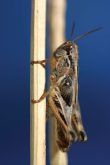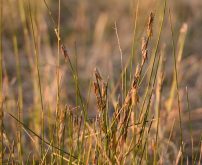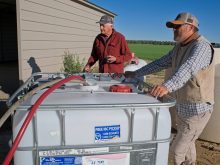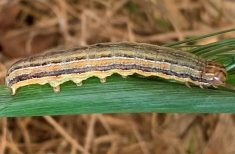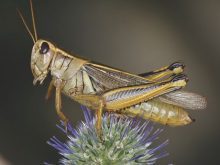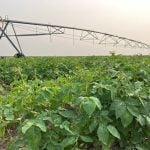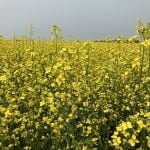Richardson’s ground squirrels, which are sometimes referred to as gophers, can cause major problems for farmers and ranchers. In high enough numbers, they can decimate crops and forages and pockmark pasture land, making it hazardous for livestock.
Persistent drought conditions have contributed to high ground squirrel populations in some parts of the Prairies in recent years.
“I would say the last four years were horrible,” says Christine Hoffman, chief administrative officer for the Rural Municipality of Maple Creek in Saskatchewan.
Read Also
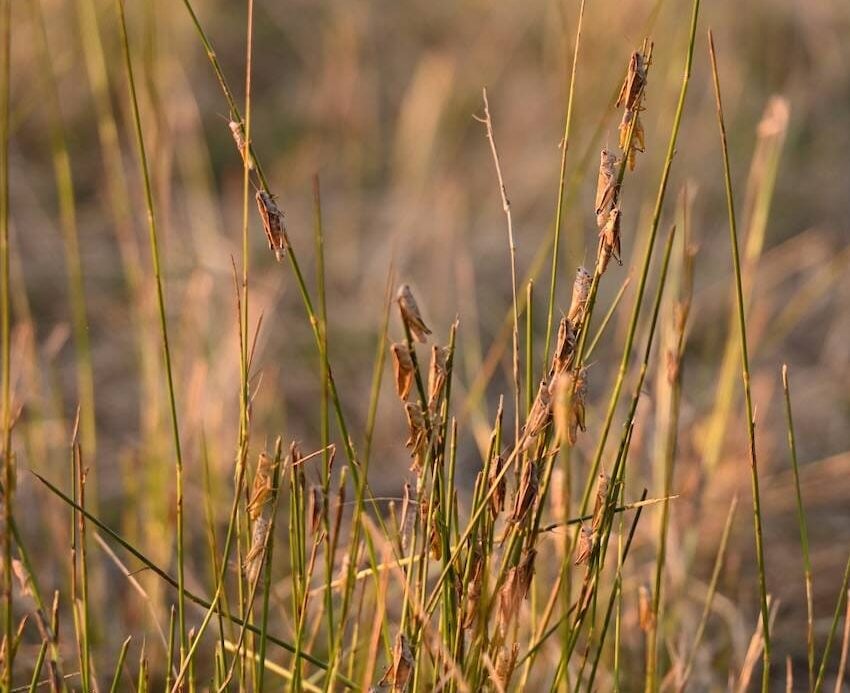
A rancher’s ‘bitin’ list’
This Saskatchewan rancher comes up with her ‘bitin’ list,’ channeling her inner Tyler Childers.
“They will eat just about everything in their path. I know gophers enjoy all seed when farmers are seeding in the spring, but they really hit corn hard as they seem to really enjoy that. They will actually dig out each seed kernel,” she adds.
“If there is anything left to grow, it is very patchy and that, in turn, causes weed issues and, obviously, poor crop production.”
Shawn Kramer, who operates a cattle ranch and is also a deputy reeve in Maple Creek, maintains ground squirrels can cause a lot of issues for ranchers and farmers alike.
“They make a mess and because of all of the holes, you’ve got cattle coming up lame. They can also wreck hay land. On some of our hay land, they ate the alfalfa down to where it’s gone completely,” says Kramer.
“If you’ve got a nice crop, something like four-feet-high wheat, you can’t really get out into the middle of a big field to control them. You’ll be combining or swathing and then you come to a spot where there’s just nothing because the gophers have eaten it down completely,” he adds.
“In our area, this is getting to be about six years of drought now, so the crops or the hay haven’t been great to begin with. A few acres may not seem like a lot, but when you’re not getting much on production anyway and then you’re losing it to gopher damage, it’s a tough battle.”
James Tansey, the provincial insect and vertebrate pest management specialist with Saskatchewan Agriculture, says ground squirrels can damage canola, cereals and hay as well as pasture.
“They’ll go into the crop and raid it, directly consuming the plant material,” he says. “Their burrowing also can be very extensive, especially if populations are large, and that can have a negative impact on equipment as well as livestock.”
Tansey says there are a couple of reasons why ground squirrel numbers are up in Saskatchewan. One is an abundance of green stuff for them to feed on when they started emerging from their burrows after winter.
Tansey says insects must also affect ground squirrel populations. Grasshoppers are an important food source and there were lots of them around in 2022 and this year as well.
“We had a bit of a cool, wet start to things this spring. I think what that did was really bring up the growth of green feed for the animals,” Tansey says. “The (plants) came up looking pretty healthy and the (ground squirrels) had a lot to eat.”

Poison bait
Tansey notes producers frequently use poison bait to control ground squirrels early in the season, but when there is a large amount of green vegetation around, it can make them less effective.
“If the poison baits are put down while there is green feed and the animals have something to choose from, there’s a pretty good chance that they’re not going to go for the baits. They are going to go for the green feed instead. They develop a bit of bait shyness if they have choices,” Tansey says.
“You will get some efficacy with continued use of poison during summer, but don’t expect complete knockdown or expect great efficacy,” he adds. “Our recommendation is always to put down poison bait in holes or in bait stations before the green-up. But, of course, the green-up came pretty fast this year.”
Tansey says mid-March to the end of April, before crop emergence and when there are fewer green plants, is generally the best time to place ground squirrel bait.
Kramer maintains tempting ground squirrels with poison bait traps just after the snow disappears from fields is ideal because that’s when they’re the hungriest. Missing that window of opportunity with bait traps could create problems down the road.
“Once you’ve kind of lost control in the spring and the gophers are everywhere, it makes it pretty hard to get them under control,” says Kramer.
For many years, liquid strychnine has been the primary poison used in grain-based traps for killing ground squirrels in Western Canada. A strychnine ban by the Pest Management Regulatory Agency (PMRA) that went into effect April 1 means that’s no longer an option for Prairie farmers and ranchers.
“We used to use strychnine when it was available and that worked the best,” says Kramer. “Once we lost strychnine, it made it a lot more difficult for us.”
Tansey says many farmers and ranchers were heavily reliant on strychnine, with some rural municipalities in Saskatchewan distributing it to growers as part of an integrated pest management (IPM) program offered by the Saskatchewan Association of Rural Municipalities (SARM).
The Saskatchewan Agriculture Ministry, in collaboration with SARM, has developed a new ground squirrel control program. SARM is administering the program. Details are available on its website.
There are other options for controlling ground squirrel populations apart from strychnine — everything from chemical alternatives to building perches for raptors’ nests near farm fields.
Rodenticide options
Other rodenticides for killing ground squirrels include zinc phosphide products, which are relatively low risk to non-target animals and birds.
“I know people who were trying the zinc phosphide bait early in the season. I heard of some successes, but it’s relatively new. We haven’t had a lot of feedback,” says Hoffman.

Anticoagulants such as chlorophacinone and diphacinone, which cause ground squirrels to die from internal bleeding after bait is eaten, are also used in poison baits.
Research has shown that anticoagulants are not effective if the surrounding crop stand is more than 40 per cent alfalfa, except when there is little green growth visible. That’s because legumes like alfalfa contain higher levels of vitamin K, which is the antidote to chlorophacinone.
Aluminum phosphide used as a fumigant in ground squirrel holes is another chemical option for control. It can be hazardous and is a restricted product requiring a pesticide applicator’s licence to purchase and apply as well as a documented treatment plan prior to use.
“There are several products available with the active ingredient aluminum phosphide,” says Tansey.
“Where that becomes a little more problematic is the documentation that’s associated with its application and some of the restrictions and training associated with its use, whereas the ready-to-use products containing zinc phosphide are very much just open a bag and either use it at a bait station or pour it down the hole.
“Aluminum phosphide also reacts strongly with water, including atmospheric water, where zinc phosphide needs a weak acidic solution, like a gopher’s gut, to break down and become very toxic,” he adds.
RoCon is a poison-free rodenticide developed by a pair of Alberta ranchers in the 1990s. The product is injected as a biodegradable foam in ground squirrel burrows and works by suffocating the rodents. Unlike baits, RoCon is not dependent on the feeding habits of ground squirrels and is effective as long as they are active in their burrows, according to the manufacturer.
A list of available products registered for ground squirrel control can be found on SARM’s website.
Strychnine alternatives
Following the PMRA’s decision to deregister strychnine, the agriculture ministries in Saskatchewan and Alberta started developing data on alternative products to control ground squirrels.
Two sister studies in the RM of Maple Creek and the Municipal District of Willow Creek, Alta., were conducted in 2022 and 2023 to compare the efficacy and economics of strychnine with these four products:
- Burrow Oat Bait (zinc phosphide)
- ZP Rodent Oat Bait AG (zinc phosphide)
- Rozol RTU Field Rodent Bait (chlorophacinone)
- Ramik Green Rodent Control Bait (diphacinone)
As a result of the study, Tansey says, the Saskatchewan and Alberta governments are recommending Burrow Oat Bait as an alternative to strychnine for controlling Richardson’s ground squirrels in the Prairies because of its efficacy and cost.
The study found no statistical difference in efficacy between Burrow Oat Bait and strychnine in 2022 and 2023. ZP Rodent Oat Bait AG performed well in the Saskatchewan sites in 2022, but results were more variable with this product in both the Alberta and Saskatchewan sites in 2023.

At $4.54 per acre, Burrow Oat Bait cost less than strychnine ($13 per acre) in 2022. ZP Rodent Oat Bait AG came in at $8.80 per acre in 2022. Tansey says the 2023 economic analysis is still pending but he notes prices have gone up for most rodenticide products.
The two anticoagulants in the study were found to be less effective than strychnine. Because of the initial purchase price and the need for multiple applications, the cost came in at $30 per acre for both products (two applications of Rozol and three applications of Ramik Green) at 2022 prices, more than twice the cost per acre of strychnine.
Non-chemical controls
Trapping and shooting have been used to control ground squirrel populations in the Prairies, with varying success. Because of the labour and costs involved, these options may be best suited for smaller areas with high ground squirrel populations.
“I have a couple of friends who come out on the weekends and shoot gophers for us,” says Kramer. “This seems to be the best thing we can do.”
Tansey says shooting is more common than trapping as a control method in Saskatchewan, but results are mixed.
“We’ve heard reports of ammunition shortages and of growers frustrated with not getting the control that they would like,” he says.
“Of course, if you do reduce a local population, you’ve left an unattended burrow system, and it’s entirely possible for another group of gophers to come in there and take advantage of that.”
Tansey says there’s continued focus on developing a long-term, sustainable management system, utilizing IPM practices that include rodenticides and non-chemical measures to keep gopher infestations below economic threshold levels (the point where pest damage exceeds the cost of the management options).
“I think to rely on any one specific IPM component is not going to get the efficacy that you’re hoping for. With integrated pest management, we’re looking for the incorporation of biological, cultural and chemical controls. All of these tools combined can help control Richardson’s ground squirrels.”
Cultural controls include habitat modification, which can reduce ground squirrel preference for an area and enable foxes, badgers, weasels and coyotes to have better success finding them.
Studies have shown that grazing practices that favour taller grass stands may reduce ground squirrel numbers because they prefer short grasses for better visibility for predator threats.
To reduce ground squirrel pressure, one technique is to maintain vegetation on pastures or forage at a height greater than 15 centimetres. Another strategy is to leave vegetation tall and ungrazed in headland areas and along fencelines so it can act as habitat for ground squirrel predators.
Tolerance is key
Ground squirrel predation can also be encouraged by erecting platforms and nest boxes for raptors near ground squirrel colonies. This is particularly useful in areas with few trees where suitable nesting sites may be in short supply.
“There are several species of raptorial bird that prey heavily on Richardson’s ground squirrels,” says Tansey, “most notably ferruginous hawks, which rely on them almost entirely for their fledglings.”
Tansey stresses tolerance for ground squirrel predators can be key to keeping the rodent numbers under control.
“Coyotes, foxes, weasels and badgers can do a lot of damage to a gopher population — in particular, badgers. I realize that badgers can do a lot of damage in fields and their burrows can be quite large, but they can have a profound effect on ground squirrel populations,” he says.
Tansey notes monitoring ground squirrel populations, and managing them when necessary, can help prevent crop and land damage and the associated economic losses when numbers get too high.
“I should temper that, though, with the need for some tolerance of Richardson’s ground squirrels. We don’t have any hope of ever eradicating them, nor do we want to,” he says.
“They are important components of grassland ecosystem functioning, and we need a certain level of tolerance for that. Unless a population is damaging, I think growers can step back a little bit.”
“I certainly appreciate some of the anxiety that growers are feeling, especially given the warm, dry conditions and the way this seems to be favouring gopher populations. I just think continued vigilance and the application of efficacious products where warranted is the best strategy.”




